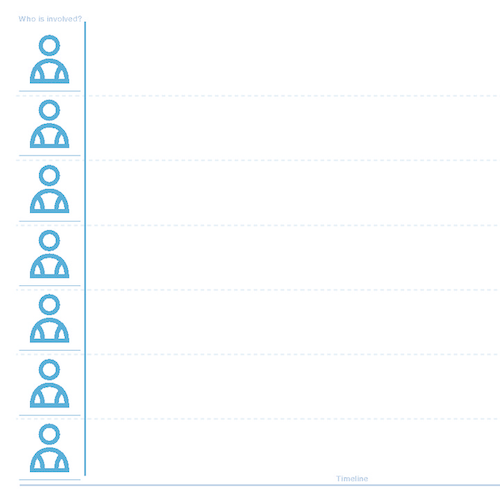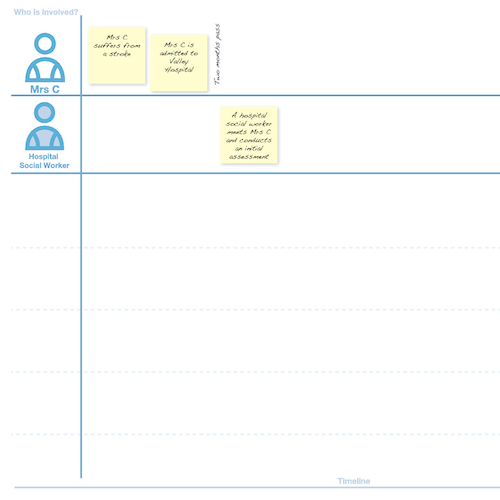Journey mapping gathers in-depth information about specific points of a journey through a service or an experience. It helps the co-design team understand the service or experience from the different perspectives of the people involved.
Either map the journey of a real person or use a case study or character profile . If you are using a case study or character profile it is helpful to ask one person in the co-design team to role play the character.
Consider the entire service or experience:
- Who is involved? Who should be involved?
- What are the entry and exit points for someone using the service or experience?
- What are the actions or steps that each person involved takes?
- When do they take them?
- Where are the gaps?
Encourage the co-design team to plot all of the steps in between the entry and exit points.
It can be useful to ask different stakeholders to complete the same journey and then compare these afterwards – do the service providers and users view the service steps differently?
The downloadable .pdf is merely a template from which you can create your own journey map. It can be useful to create the journey map base on a long piece of paper. Use post-it notes to capture the steps of the journey (these can then be moved around as the journey grows). Consider using different colour post-it notes for each person involved in the journey. Take photographs of the journeys for your research.


